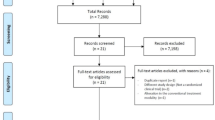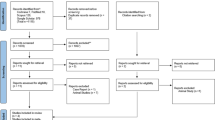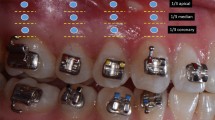Abstract
Data sources
Pubmed, Embase, Google scholar beta and the Cochrane Databases.
Study selection
Randomised controlled trials (RCTs) and controlled clinical trials (CCTs) reporting on results or treatment parameters related to accelerated orthodontic tooth movement were considered.
Data extraction and synthesis
Data abstraction and quality assessment using the Cochrane risk of bias tool were carried out independently by two reviewers. A meta-analysis and narrative synthesis was presented.
Results
Eighteen studies (342 patients ) were included. Eight involved low intensity laser, seven corticotomy, and interseptal bone reduction, pulsed electromagnetic fields and photobiomodulation were each investigated by a single trial. Twelve RCTs and six CCTs were included. Two RCTs were considered to be at low risk of bias, five at unclear risk and five at high risk of bias. Three CCTS were at high risk of bias and three at unclear risk. Two studies on corticotomy and two on low intensity laser were combined in a random effects model. Higher canine retraction rate was evident with corticotomy during the first month of therapy (WMD=0.73; 95% CI: 0.28, 1.19, p<0.01) and with low intensity laser (WMD=0.42mm/month; 95% CI: 0.26, 0.57, p<0.001) in a period longer than three months. The quality of evidence supporting the interventions is moderate for laser therapy and low for corticotomy intervention.
Conclusions
There is some evidence that low intensity laser therapy and corticotomy are effective, whereas the evidence is weak for interseptal bone reduction and very weak for photobiomodulation and pulsed electromagnetic fields. Overall, the results should be interpreted with caution given the small number of studies, allied to limited quality and heterogeneity of the included studies. Further research is required in this field with additional attention to application protocols, adverse effects and cost-benefit analysis.
Similar content being viewed by others
Log in or create a free account to read this content
Gain free access to this article, as well as selected content from this journal and more on nature.com
or
References
Long H, Pyakurel U, Wang Y, Liao L, Zhou Y, Lai W . Interventions for accelerating orthodontic tooth movement: a systematic review. Angle Orthod 2013; 83: 164–171.
Author information
Authors and Affiliations
Additional information
Address for correspondence: N. Gkantidis Department of Orthodontics and Dentofacial Orthopedics, University of Bern, Freiburgstrasse 7, CH-3010 Bern, Switzerland. E-mail address: nikosgant@yahoo.gr
Gkantidis N, Mistakidis I, Kouskoura T, Pandis N. Effectiveness of non-conventional methods for accelerated orthodontic tooth movement: a systematic review and meta-analysis. J Dent 2014; 42: 1300–1319. doi:10.1016/j.jdent.2014.07.013. Epub 2014 Jul 27. PubMed PMID: 25072362.
Rights and permissions
About this article
Cite this article
Fleming, P. Accelerating orthodontic tooth movement using surgical and non-surgical approaches. Evid Based Dent 15, 114–115 (2014). https://doi.org/10.1038/sj.ebd.6401063
Published:
Issue date:
DOI: https://doi.org/10.1038/sj.ebd.6401063



